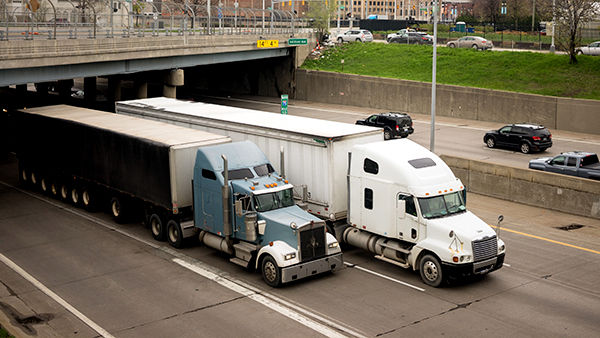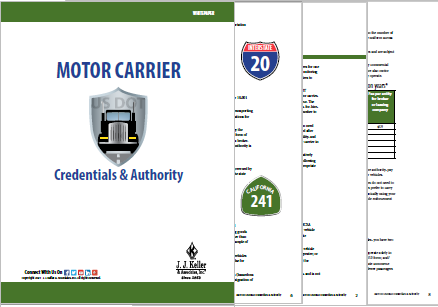The FMCSA regulates motor carriers for one primary purpose: to protect the public. Attempting to determine if you have the necessary FMCSA-required operating credentials can be a daunting task. Download this free whitepaper for more information on what operating authority is needed and when, MCS-150, Unifed Carrier Registration (UCR) and more.
Top 6 Small Fleet Challenges - Part 1
Richard Malchow, Industry Business Advisor
June 23, 2023

There are nearly two million carriers operating in the United States – nearly all of them are considered small. In fact, nearly 96 of every 100 carriers operate less than 10 vehicles and over 99% operate fewer than 100 vehicles. While a small company does not have near the resources as a larger carrier, the federal safety rules are applied exactly the same – regardless of size. This fact can be quite the challenge for a small carrier.
Vehicle compliance falls into three compliance challenge areas: driver, vehicle, and carrier. In this three-part series, we will examine two of the top challenges for each area – beginning with the driver.
Challenge 1: Ensure drivers have the skills and training for safe vehicle operation and effective inspection
The regulations are clear in this area:
- The driver is required to be knowledgeable and compliant of all applicable safety regulations – including operation and inspection of the vehicle (49 CFR 390.3(e)(2));
- By reason of training or experience the driver needs to be capable of safely operating the assigned vehicle (49 CFR 391.11(b)(3));
- Before driving, the operator must be satisfied the vehicle is in safe operating condition (49 CFR 392.7 and 49 CFR 396.13); and
- The driver must be fully aware of all the parts and accessories necessary for the safe operation of the vehicle and what vehicle inspections are required of the driver (49 CFR 393.1(b)(1) and 49 CFR 396.1(a)).
It is not enough to provide a “green book” with the regulations, carriers need to take the time to train the driver, evaluate skills, and provide both on-going and corrective action training as needed. These vehicle skills assessments and training need to be documented to demonstrate compliance in an audit or a courtroom.
Challenge 2: Ensure the driver completes the required vehicle inspections
A good inspection takes time. Carriers are often concerned that drivers “pencil whip” pre-trip, enroute, and post-trip inspections. This term can encompass documenting an inspection that never occurred or doing a half-hearted walk around inspection and calling it “good.”
Carriers should follow up on every roadside inspection whether clean or violations were found. The vast majority of vehicle roadside inspection violations can be identified by a detailed walk-around and under the hood inspection.
Many carriers have success in providing incentives for clean inspections, providing comprehensive inspection training, and tagging items on the vehicle that when found can be redeemed for cash or prize awards.
It is not enough to have a policy requiring vehicle inspections if there is no consequence of following the policy.
The vehicle challenges are many, but a successful program begins with the driver. Drivers possess four of the front-line senses for any small carrier’s vehicle program providing the initial sight, hearing, touch, and smell for any maintenance problem or potential concern.
FREE Motor Carrier Credentials & Authority Whitepaper & Quote
